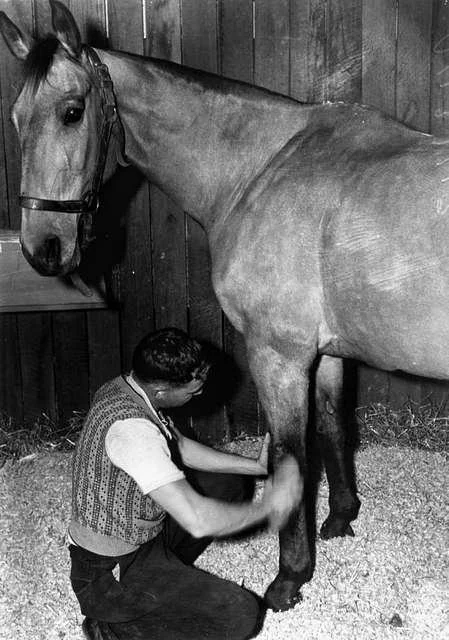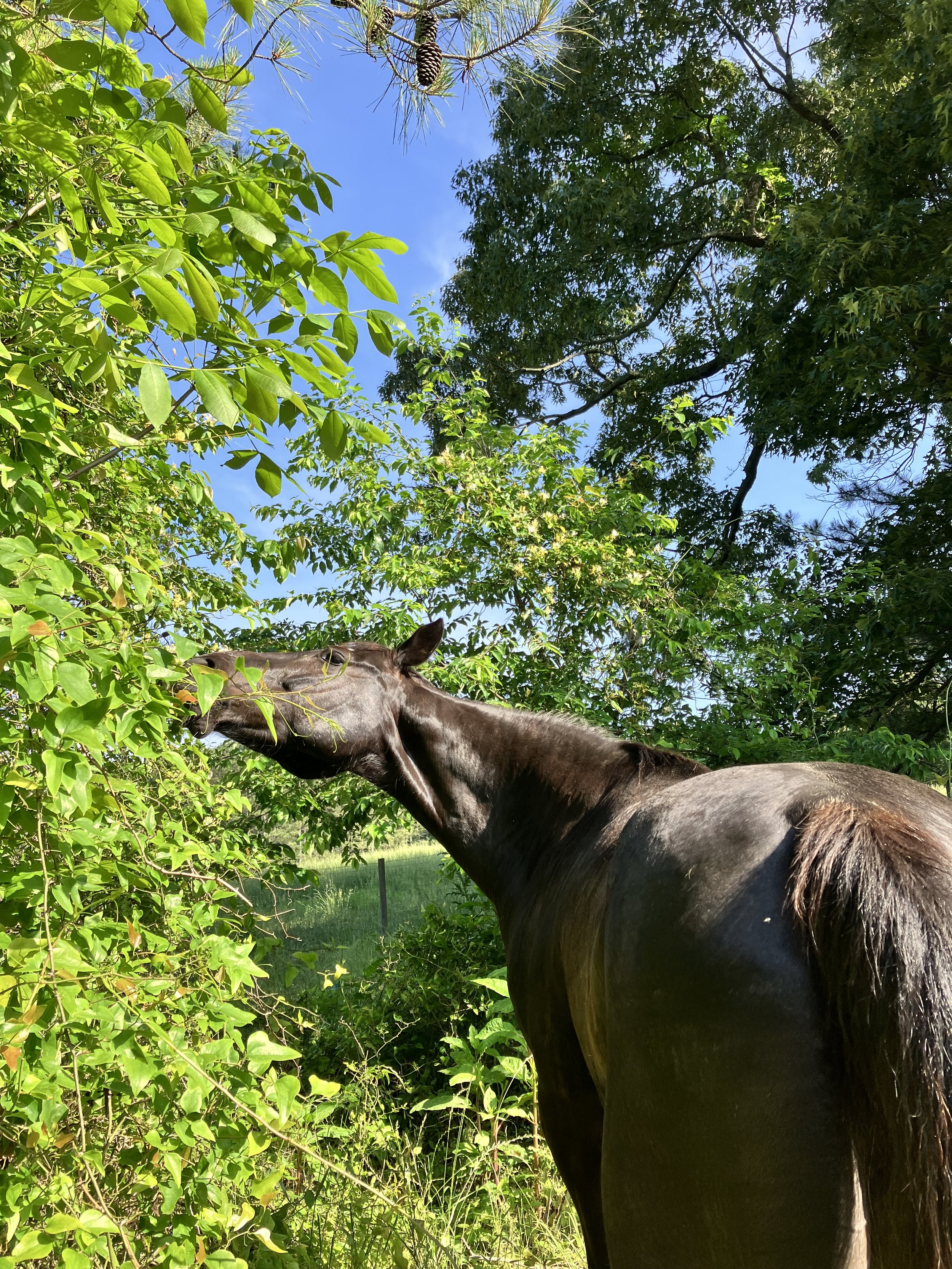Everyday Ethology
Welcome to the New Home of Everyday Ethology
Everyday Ethology began as a column shaped by the animals we work with, the people who care for them and the insights that arise between wild and domestic worlds. This new home allows the writing to grow grounded in curiosity, care and openness.
You’ll find updated favorites, new articles, guest voices and ‘Quick Reads’ which are short reflections meant to encourage noticing.
We hope these pieces spark ideas of your own. Your observations and experiences might offer perspectives that help others and we welcome you to share them.
Search by Category
Why Equine Ethology Matters for Domestic horses
In my work at Bodhi Horse Practice, I’m often asked what it means to approach horse behavior through equine ethology. In essence, it’s the study of horses’ natural behaviors in their original environments—how they live, interact, and communicate in the wild or semi-wild. This isn’t about recreating some idealized wilderness or even ‘natural horsemanship’; it’s about understanding how these instincts play out in the day-to-day lives of our domestic equines and then using that knowledge to support their wellbeing.
Inhabiting the World Together: Enrichment as Relationship
Alana and I recently had the pleasure of speaking with Lluc Pedrero from Barcelona, Spain, who specializes in equine ethology with a focus on enrichment. Our conversation crossed three countries and opened many roads of discussion, so many, in fact, that we decided to share them with you as a series of articles. This collaboration is especially meaningful to all of us because, under normal circumstances, distance and language barriers might have kept us from connecting. Yet here we are. These articles will be available in both English and Spanish.
Horse Manure as Fine Wine: Notes from the Stable Sommelier
Ever sniffed horse poop and wondered what it meant? Turns out, manure might be one of the most honest signals of equine health. Explore how smell, texture, and behavior around droppings can clue you into your horse’s gut health.
Is Your Horse a People Pleaser: Are You?
Discover how people-pleasing patterns in humans mirror subtle appeasement behaviors in horses. This article explores the difference between true cooperation and quiet compliance, why “prey animal” labels miss the full picture of equine coping strategies, and how to recognize the often-overlooked signs of stress or fawning in your horse. Learn what these patterns reveal about both equine wellbeing and your own nervous system responses.
Quick Reads: Not Ours to Name: On Empathy Without Ownership
Anthropomorphism - our tendency to assign human characteristics to non-human animals isn’t inherently a mistake. Often it’s the bridge that allows us to care. But it’s layered: there’s empathy and intuition for our fellow mammals and then there’s supplanting our identity onto them to serve ourselves.
That’s the tension we navigate in our work. The question isn’t whether we anthropomorphize, but when it helps and when it gets in the way.
Why Are So Many Domesticated Horses Lame?
This week’s question comes from Alana Somerset, a Veterinary Physiotherapy student based in London, UK. Alana writes:
“I’m really fascinated with free-living horses and how their locomotion and conformation may differ from our domesticated horses. We are always taught how horses should be, but what is actually best for them given the circumstances?”
Quick Reads: Magical Latherin!
Unlike us, horses don’t sweat just to cool, they sweat with a chemical twist. One protein in particular makes their sweat magical: latherin. This was explored in a 2013 study, The structure of latherin: a surfactant allergen protein from horse sweat and saliva. Though published over a decade ago, latherin remains a mystery scientists continue to probe.
Barn Drama Included: Real-Life Lessons in Horse Feed, Hay Sourcing & Unexpected Challenges
Relocating with horses isn’t just about new barns. It’s new feed, hay and challenges. Discover what one equine pro learned about alfalfa, additives and drama in the feed aisle.
What Do You Feed a Horse Who Was Bred to Eat Nothing?
Having spent my childhood in the Middle East, working with clients in the region now brings me a sense of reconnection. The bond between horses and humans in the Arabian world spans thousands of years, deeply embedded in tradition.
Horses, Orcas and Morality
Robert Anderson first contacted me after reading one of our Everyday Ethology articles. A physicist scientist by education, Robert had the rare experience of closely encountering orcas at SeaWorld San Diego between 1979 and 1980. He also has a long-standing relationship with horses, beginning on a ranch where he came to know thirty-two individuals, each with their own personality, preferences and social roles.
Quick Reads: Say What you mean
The language we use to refer to our horses sets the tone for how we relate to them. Too often they are spoken of as objects: it. Or infantilized as ‘my boy’ or ‘my girl’. Relationships are framed in transactional terms like buyer, owner, or rescuer. But what if your words reflected the deeper truth of your bond?
Quick Reads: Ask for Whatever You Want
This piece is a reflection of Say What You Mean and is an English translation of the original Spanish commentary. This reflection does not equate the experiences of enslaved people with those of horses. Rather, it questions how language and expectations reveal a shared pattern: treating living beings, human or non-human as objects meant solely for use.
Safely Introducing a New Horse to a Group
Reader Q: A client recently rehabbed a horse who had their thigh muscle bitten through by another horse during a herd introduction. After multiple skin grafts and nine months of box rest, the horse is sound again. — Anonymous, US
Do Our Horses Love Us?
I love this question because it touches on the profound nature of our relationships with equines. Writing a response required introspection and a willingness to confront some uncomfortable truths about how humans have historically interacted with and “loved” horses. Concepts like love, connection, and trust are particularly hard to define—especially when applied to nonhuman animals. Rather than attempt to pin down a single definition, we’ll explore how horses may express these qualities in their own unique ways.
Why are Some Horses Stoic and Others Not?
Stoic behavior in horses can stem from both natural personality and learned behavior, but the context is essential. In environments where survival depends on avoiding unwanted attention, horses may suppress visible signs of pain or discomfort. While this trait is sometimes seen as “stoicism,” it’s not the whole story. In a natural herd setting, horses are highly communicative, expressing themselves through vocalizations, body language, and seeking support from others when stressed or injured. Their social interactions are nuanced and dynamic, built on mutual trust and understanding.
Walking Together, One Last Time
There is little definitive knowledge about how horses in the wild or those living freely experience the illness and death of a companion. Anecdotal accounts vary widely. Some horses refuse to leave the side of a struggling friend; others linger near a body that has already grown still. Some stand guard in quiet solidarity, while others seem to recognize the inevitable and accept it without hesitation.

















